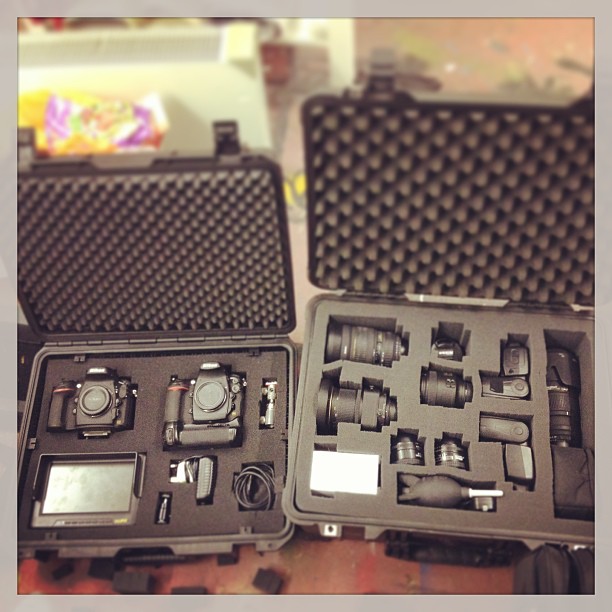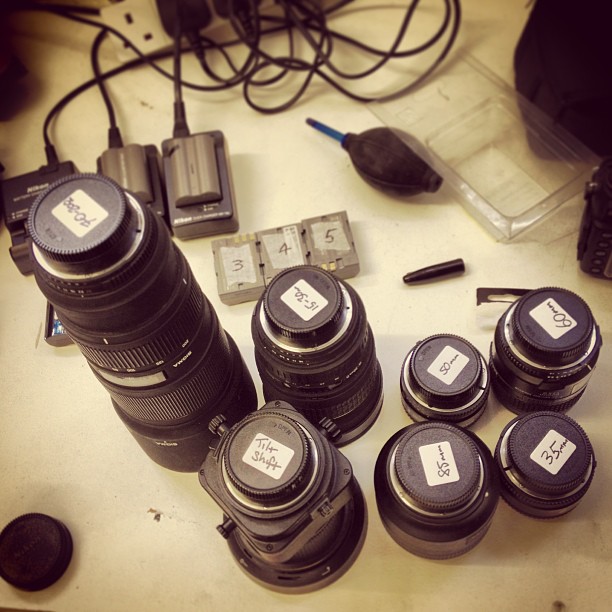The Photographic Assistant
A photographic assistant is a person who has many roles when working alongside a photographer this can vary from carrying equipment to doing post production on images it all depends on what is agreed between the photographer and the assistant before hand and what level of assisting is required. A photographic assistant is a job in its own right and should be treated as such, it is not always simply an internship to learn from the photographer although many times this is what it is there are also people who see assisting as a career and choose to assist instead of actually becoming a practicing photographer themselves. Having the right assistant on a shoot can make or break a shoot. There are various things you should consider before choosing someone to assist for you and also various rules I believe assistants should try to follow when assisting. In this blog post I hope to cover many points using my experiences and from what I have learnt speaking to other photographers. Many photographers choose not to use an assistant this may be due to many reasons but the most common reason is that they just “have never used them”. Many people see it as an unnecessary cost which reduces overall profit however there are also many benefits to having an assistant which include:
Carrying equipment
This depends on the type of photography you do, if you are a photojournalist then often you will only carry two camera bodies with lenses attatched and would have no need for an assistant to carry your equipment. However an interior and architectural photographer like myself carries a huge array of different equipment from large Peli cases full of lenses and camera bodies to lighting and even cases containing props. All of this equipment needs to initially be bought into the location and then often dismantled and reassembled in various locations around a building. Although this could be done alone having an assistant with you saves time and allows you those precious minutes to consider the next shot or speak to the client. Also the last thing a client wants to do is speak to a photographer when he is out of breath and sweating. Also on a more selfish note a photographer needs to ensure that they stay healthy and avoid injury as I learnt recently when I slipped a disk in my upper back.
Setting up a shoot
Setting up a photo shoot takes time whether it be a studio with backdrops, lighting and even laptops and computers which need to be tethered to the camera. Testing equipment also takes time, making sure that pocketwizard triggers the right light and the camera is sending images. All of this is time that could be spent talking to the client, models or hair and makeup to ensure that they are informed about the shoot. Having an assistant or even a team of assistants frees up the photographer to concentrate on the actual shoot itself as apposed to the tools being used for the shoot and this will result in better images in the long run because the photographer wont feel rushed. With interior photography which is what I do the space we are photographing is often lived in and needs a lot of attention before I can even consider photographing it. An assistant is an essential part of my shoots because they help to tidy a location and set it up for the shot (often an item of furniture will look completely wrong in real life but through the camera its perspective is perfect). Also the assistant can act as a second set of eyes for small details such as a light switch on the wrong setting or even a reflection where you or the camera is visible (happens more often than I would like).
Appearances
In the world of professional photography appearance is everything. A scruffy photographer is likely to not get repeat work especially when working with high end or luxury clients as they want the people providing the photography to reflect their product. This should also be said for your assistant who should always be smart. Having an assistant gives off the appearance of being more professional and having the available funds to pay an assistant which is often important because clients want the assurance that they are hiring the “best”. This doesn't mean you have to wear an Armani suit and tie but try to dress smart casual.
Driving
Many photographers specify that their assistant be over 26 and hold a driving license this is because they wish to insure that assistant to drive their car to jobs and its cheaper to do so if they are over 26. The reason for this is to make sure that the photographer arrives at a job fresh and ready to work as often jobs will be a long distance away. This is similar in reason to why people use business class on aeroplanes because driving/ travelling is tiring.
Helping with directing and controlling light
This is one of the most important uses of an assistant. Controlling light is exactly what a photographer does as images are created using light. An assistant holding a reflector or blocking stray light beams or reflections is essential for any shoot on location or in a studio.
Choosing an assistant
The way you choose who assists you is a personal thing as there is a huge aspect of trust between the photographer and the assistant which needs to be strong as essentially the assistant becomes an extension of the photographer when working on a job.
Here is a list of things I believe you should consider before hiring a photographic assistant:
1 - Their connection to photography
If someone has decided that they want to be a photographer but dont know where to start so see assisting as a route into becoming a photographer this is a good start and will mean that the person is enthusiastic but can also mean that the person is inexperienced and will need a lot more training which takes time and is best avoided "on location" in front of clients, there is nothing more unprofessional than having to explain how a light works to your assistant while the client stands there impatiently waiting for their portrait. So if you hire someone who is not skilled in the photographic equipment its usually a good idea to get them in and show them around your equipment or take them on a job where the client is not present.
2 – Their age
Age is not an essential factor when choosing an assistant but with age comes a sense of responsibility as well as common sense. Many things could also be affected by the age of your assistant such as liability insurance and also car insurance should you wish your assistant to drive.
3 – Appearance
An assistants appearance should reflect the photographers appearance so if you are photographing luxury properties an assistant wearing baggy jeans and covered in tattoos and piercings will probably not go down too well. However if photographing an album cover for a heavy metal band then a suit would look out of place. Assistants should try to dress smartly as if going to work in any job but make sure that its comfortable and your shoes are sensible. Also take into account the weather. If in doubt ask the photographer you are assisting, another must is the clothes should be dark and non reflective as the last thing a client wants to see in their windows is a reflection of the assistant.
4 Always meet the assistants
Always make sure you meet the assistant you are wanting to use before taking them on a job, this is essential because you never know who could turn up and also its important to get to know them
What can you do as a photographer to help the assistant?
1 - Be clear on instructions
When asking an assistant to do something always be clear and concise, always let them know exactly what to do and encourage questions if they are unsure.
2 - Pack properly
Try to pack equipment so that it is easy to carry, keep lighting stands in a bag not just loose in the boot of the car to avoid the assistant walking down the road balancing everything on their head.
3 - Label your lenses
This is a good way to ensure the assistant will grab the correct lens, just put a small label on the lens cap:
And now a list of things that Assistants should NEVER do while on a shoot
1 – EAT ON A SHOOT
Never eat while working unless instructed to by the photographer, snacking is not professional
2 –Never chew chewing gum
Chewing chewing gum is both rude and noisy often on a shoot its very quiet and the sound of an assistant chewing is off putting.
3 - Never swear
Swearing is both rude in most situations but in front of a client is a big no no
4 – Never pitch your own photography
This sounds like an obvious thing to say but it does happen. Pitching your services to another photographers client is both rude and to do it while assisting is stepping over a barrier of professionalism.
5 – Being on your phone
Nowadays everyone has a mobile phone but in most jobs you are not allowed to use while working and this should be the same while working for a photographer. There is nothing worse than turning around and finding your assistant texting their friend or updating their facebook.
6 – Taking your own photos
Unless stated by the photographer keep your camera at home as well as keeping your camera phone in your pocket. Many shoots are not supposed to be seen by the public until the images are complete so an assistant posting images online may jeopardise this and get the photographer in trouble with the client.
6- Never turn up late
If you are going to be late at least let the photographer know but if possible try to be on time or early as often the photo shoot has a restricted amount of time for completion and your lateness can ruin a shoot.
So in conclusion picking an assistant takes time and you often work your way through a few before finding one you are happy to use.
Thanks for reading and leave a comment if you have suggestions
Nick



